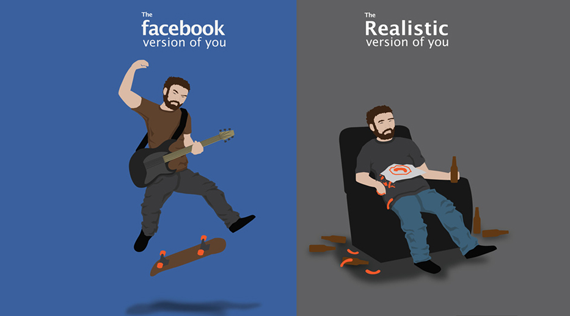
You never really stop learning, and that’s why it’s good to stay in touch with your University or College. Last week I was sent another alumni update email from UCL and ended up learning about teenage identity in the 21st Century.
The “mirror stage” that he talks about is something I remember from third year film classes (fascinating, but deeply confusing). Unsurprisingly, I’d not spotted any connection between psychoanalytical theory and how we see ourselves online, but Lionel Bailly seems to have found such a link. Twenty-first century teens are the first age group to develop their identity alongside technology. Before the web, there was no hiding your appearance or character: you had to negotiate the reality of you with how you wanted to appear. That might still be true in person, but the Internet and social media now enables teens to control how they appear in the digital space.
Anyone who has a social media account or contributes online is in the process of building a digital identity. It’s hard not to: each comment and “like” adds data to your profile, and what you say as well as visually how you portray yourself slowly forms your digital identity.
At first this information might seem trivial, but it has longer term importance, such as suggesting your more ingrained political and philosophical attitudes. Researchers at Cambridge have been able to accurately predict people’s attitudes to subjects like gay marriage and political affiliations, simply based on your location and what food you like (see the myPersonality research project). A small action online can be hugely revealing, even something as simple as sharing.
On or offline, sharing is a simple but fundamental social action. We can share pretty much anything and, unless we’re guilty of over-sharing, it’s a positive thing. It’s also vital to building an online identity – share something interesting, funny, outrageous and like-minded people will tune in to you. Given the ever expanding universe of information online, being able to share the best bits with other people is a valued skill.
I think we often overlook why people share. We do so out of goodwill, a connection or a sense of duty. But online, we’re also involved in the process of identity building. We share because we want it to create a good impression of ourselves. Passing on funny videos makes us feel more comic, emailing amazing websites shows how web savvy we are and tweeting thoughtful articles makes us feel smarter. As Sarah Rabia, Lead Digital Strategist at Mother puts it:
“70% of postings on social media fall into the category of people demonstrating something about themselves or creating an identity.”
When we share online, we’re all projecting an image of ourselves that they want other people to see and respond to. Research by MTV into gen-y (that’s 18-30 year-olds) supports this. People surveyed from this age group admit to actively curating the information they share and show about themselves online. We’ve never been so conscious of how other people see us.
If people are consciously creating an identity online, limit what they share to the things that will reflect positively on them, then that has to be central to any social (or “sociable”) idea. Whether it’s part of a marketing campaign, an online community or a political message, if you’re asking people to share an idea, it needs to reflect well on them. Ultimately, we’re all curators; all we want is to look good so people to like us.

April 3rd, 2013 → 7:16 am
[…] If I share this, how will it make me look? As I mentioned in my last post, people are aware that sharing is a way of curating their online identity (in the same way people buy certain clothes to look a certain way). Will they look good? Or funny? […]
LikeLike
December 16th, 2013 → 12:19 pm
[…] Showing off and sharing […]
LikeLike